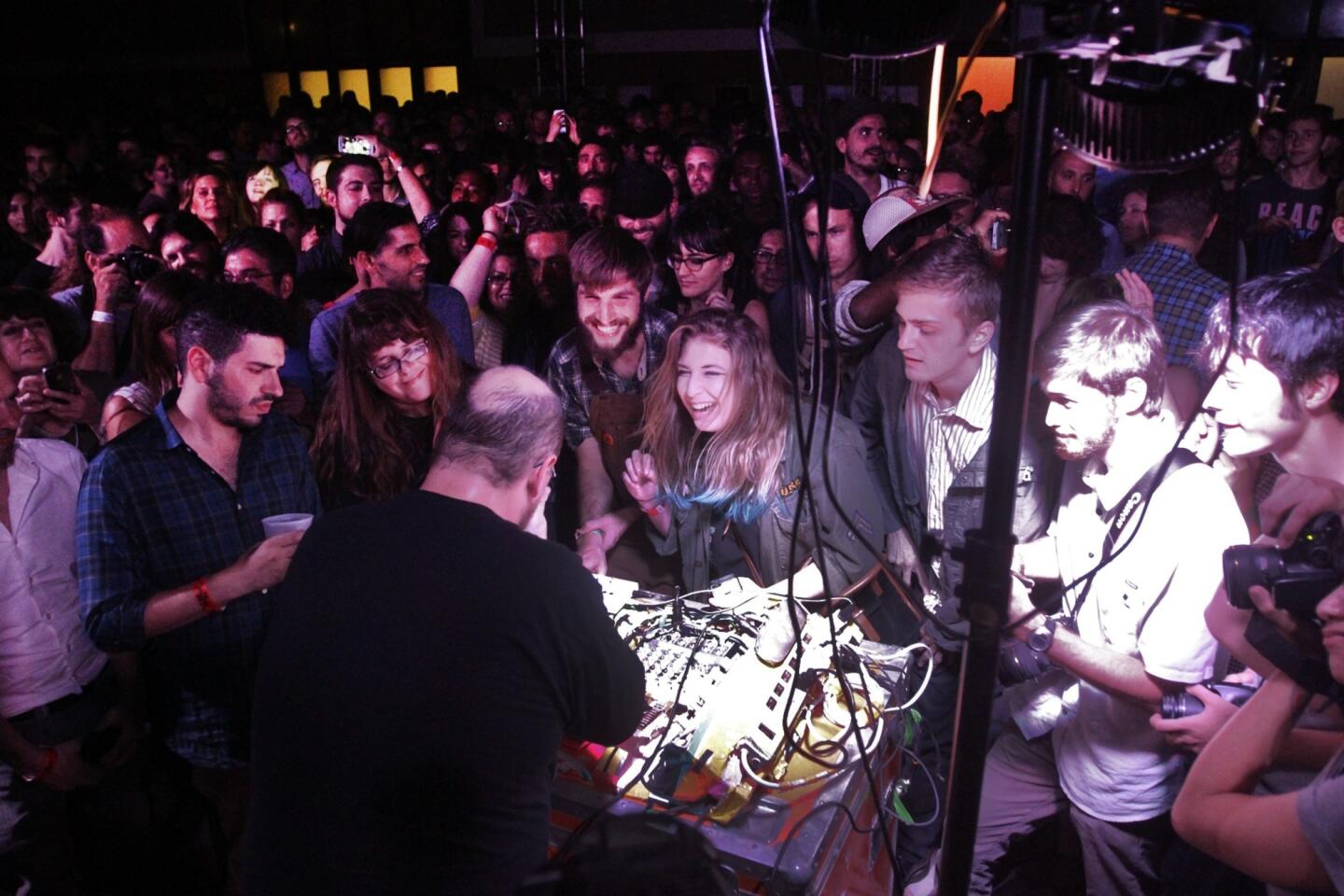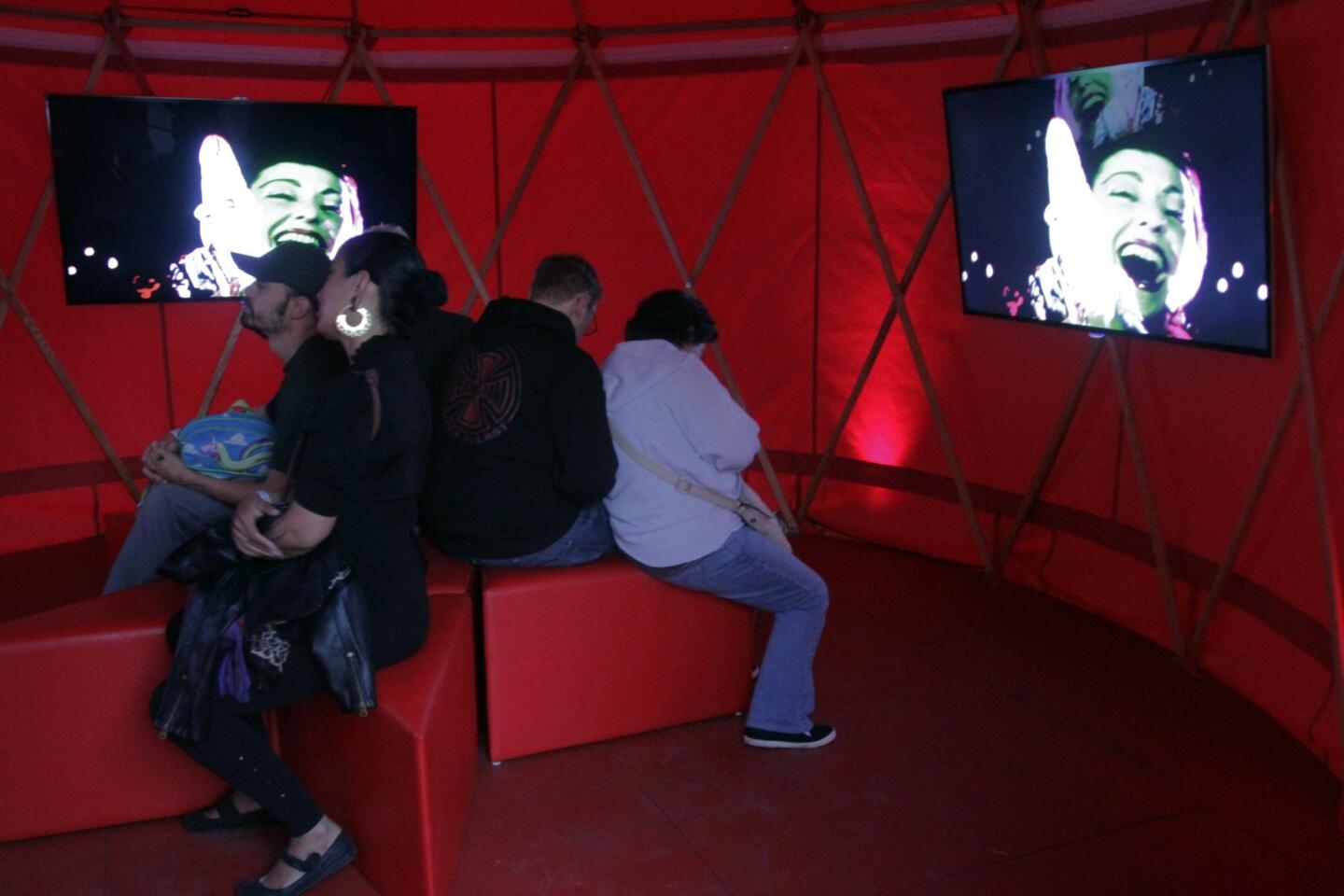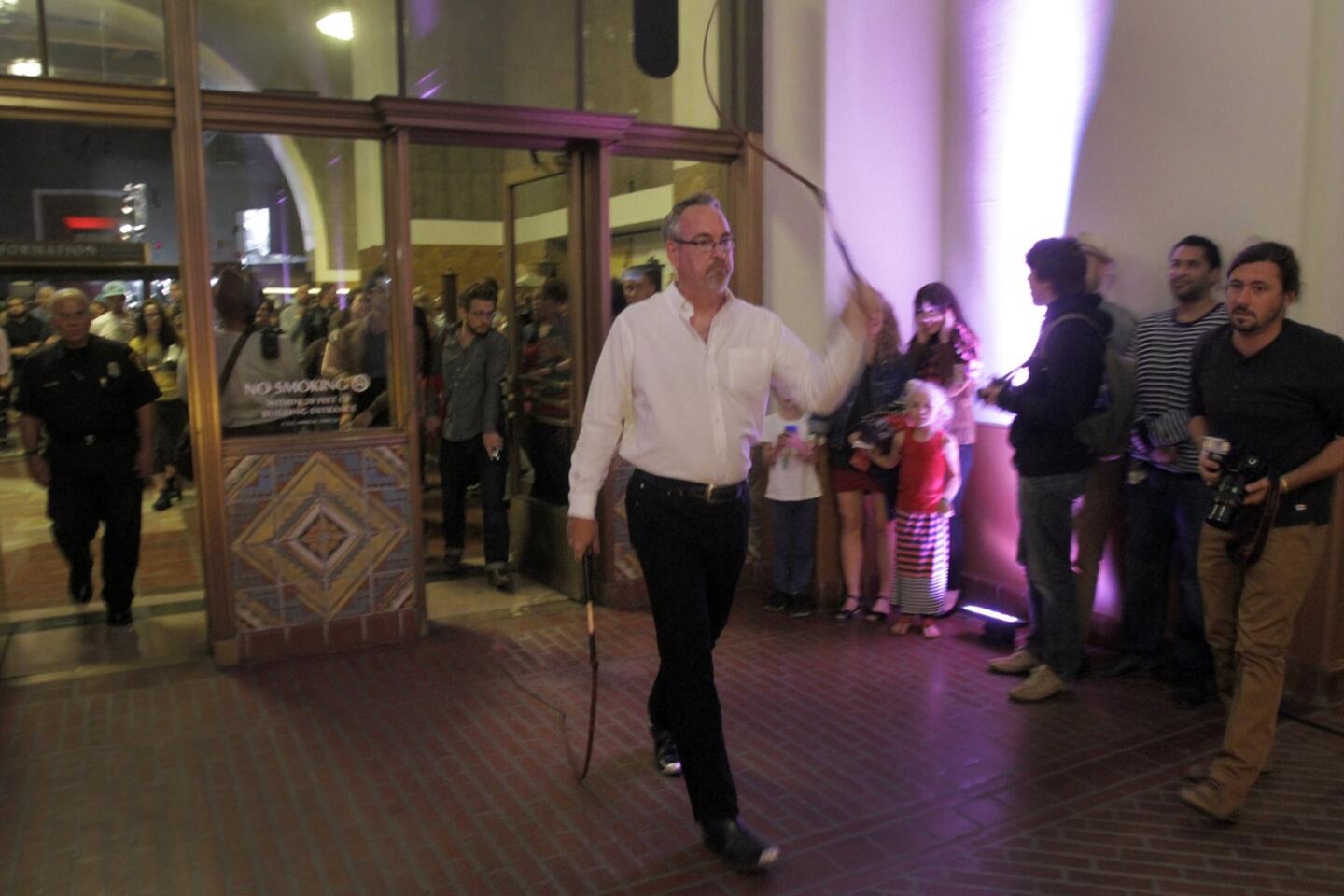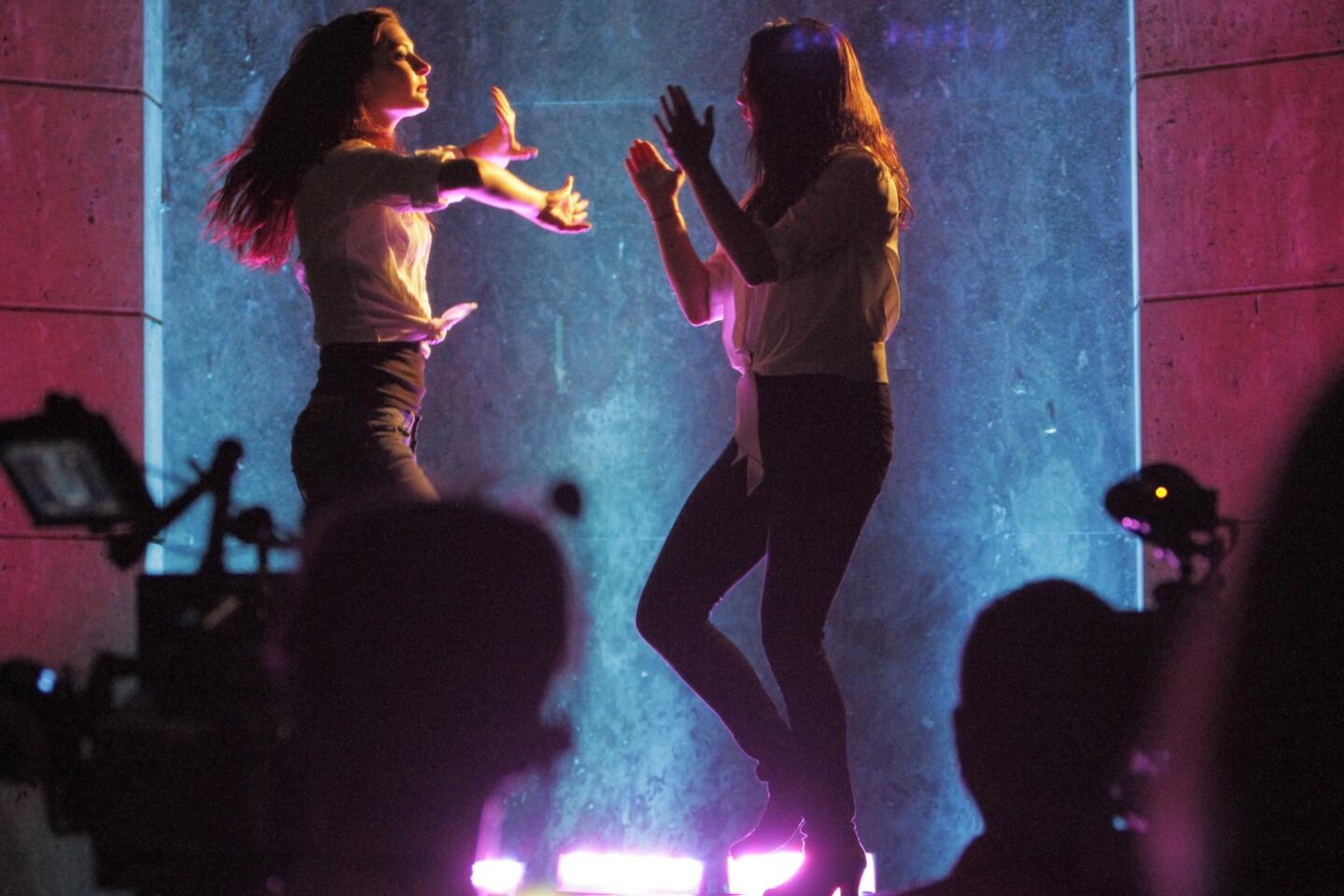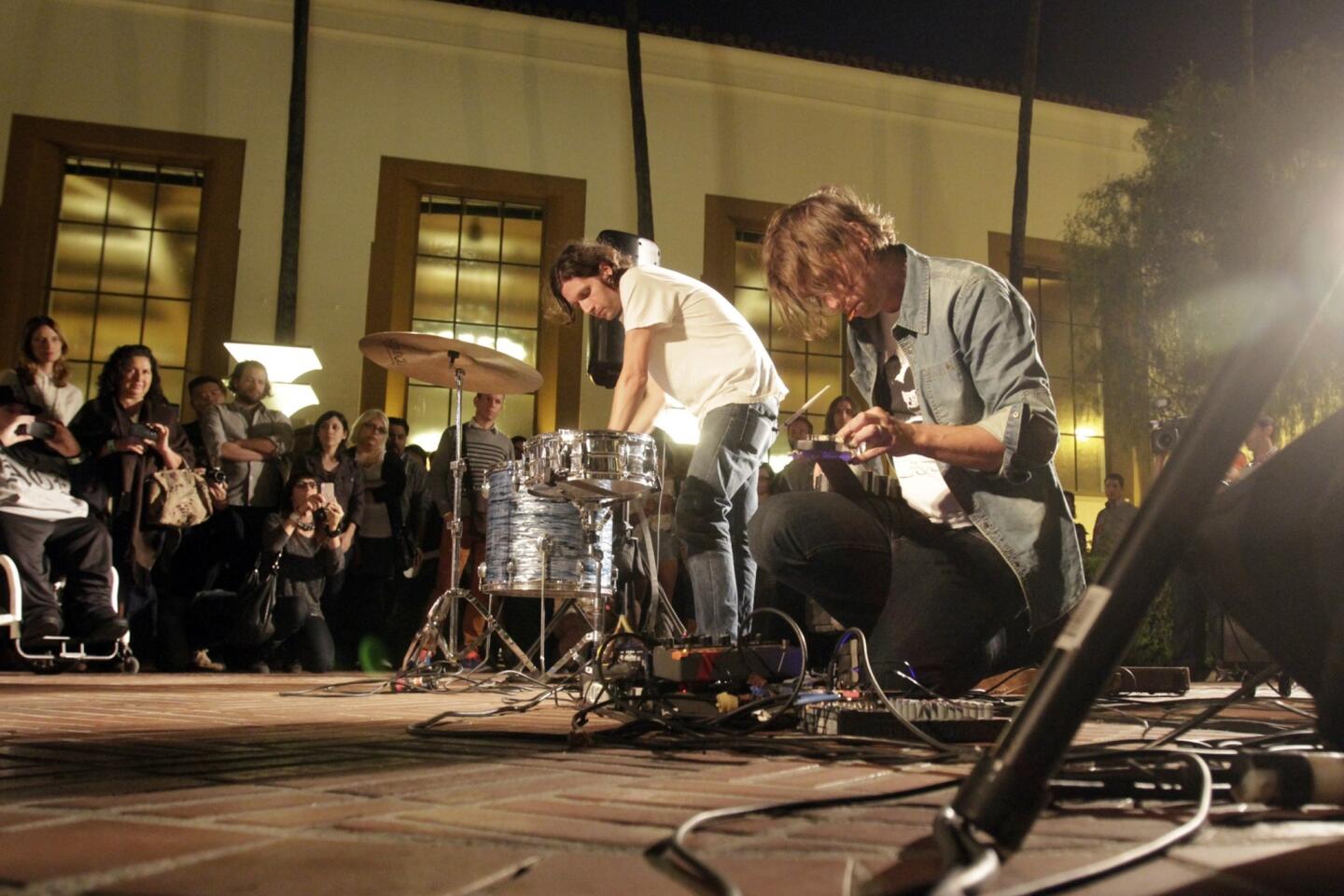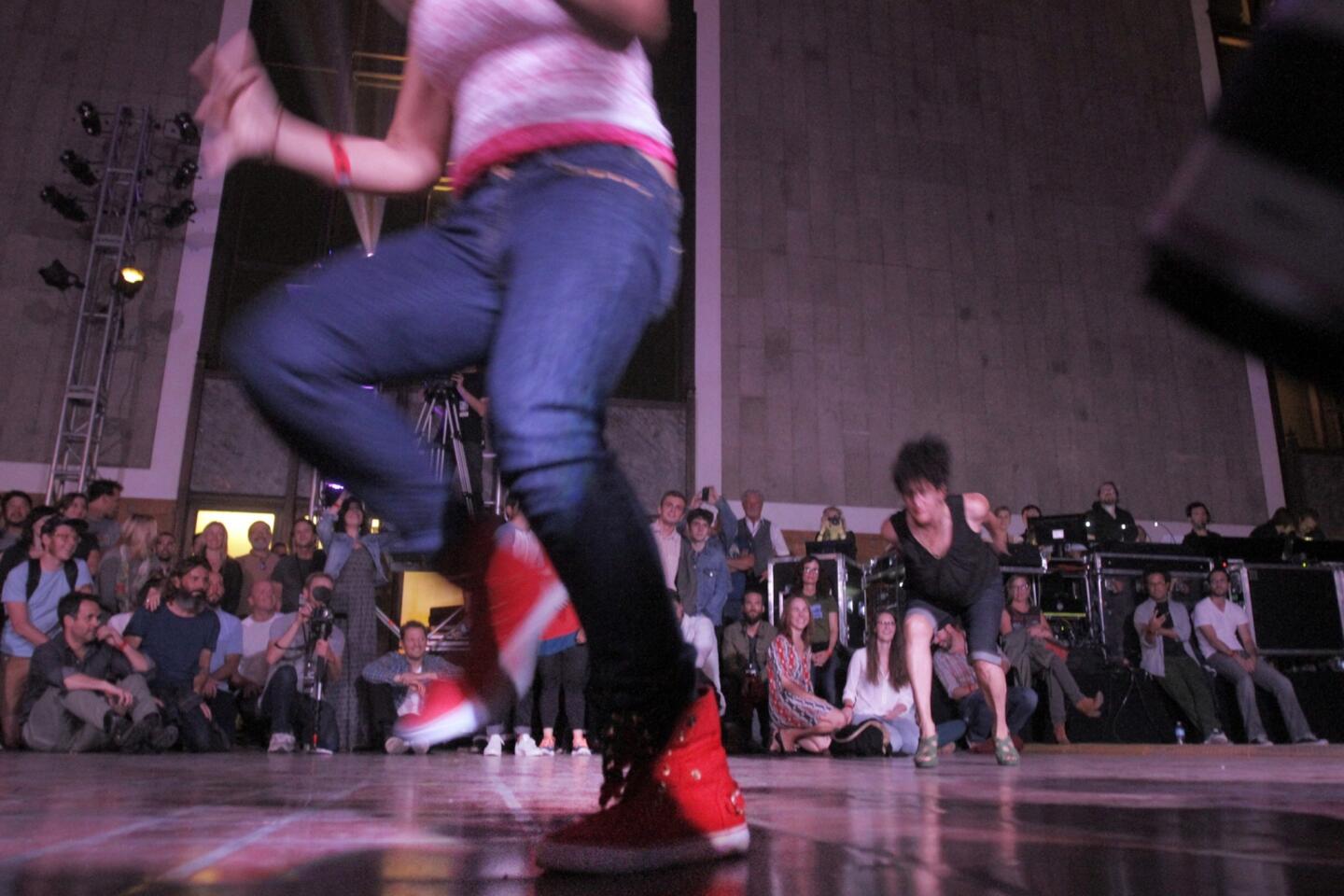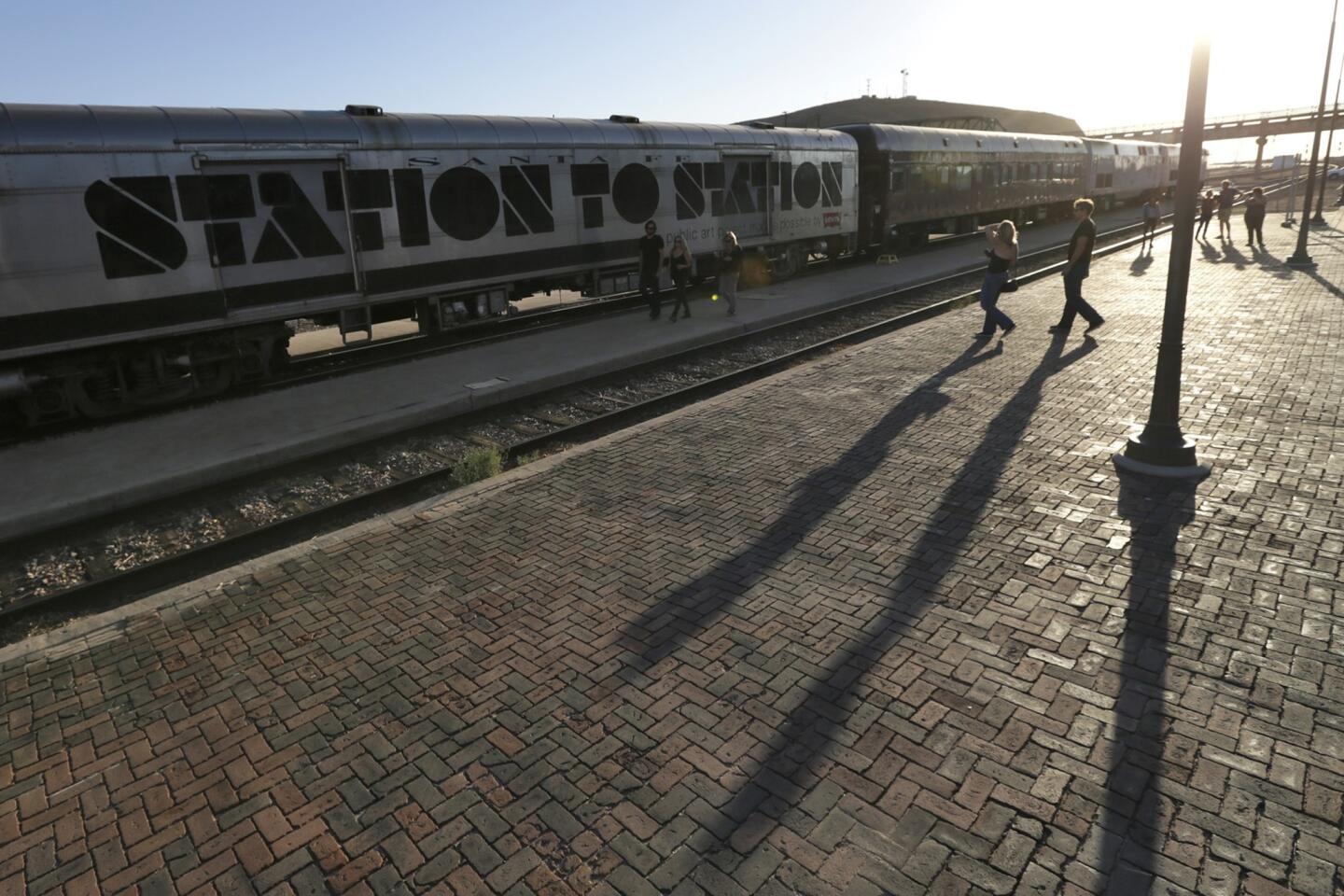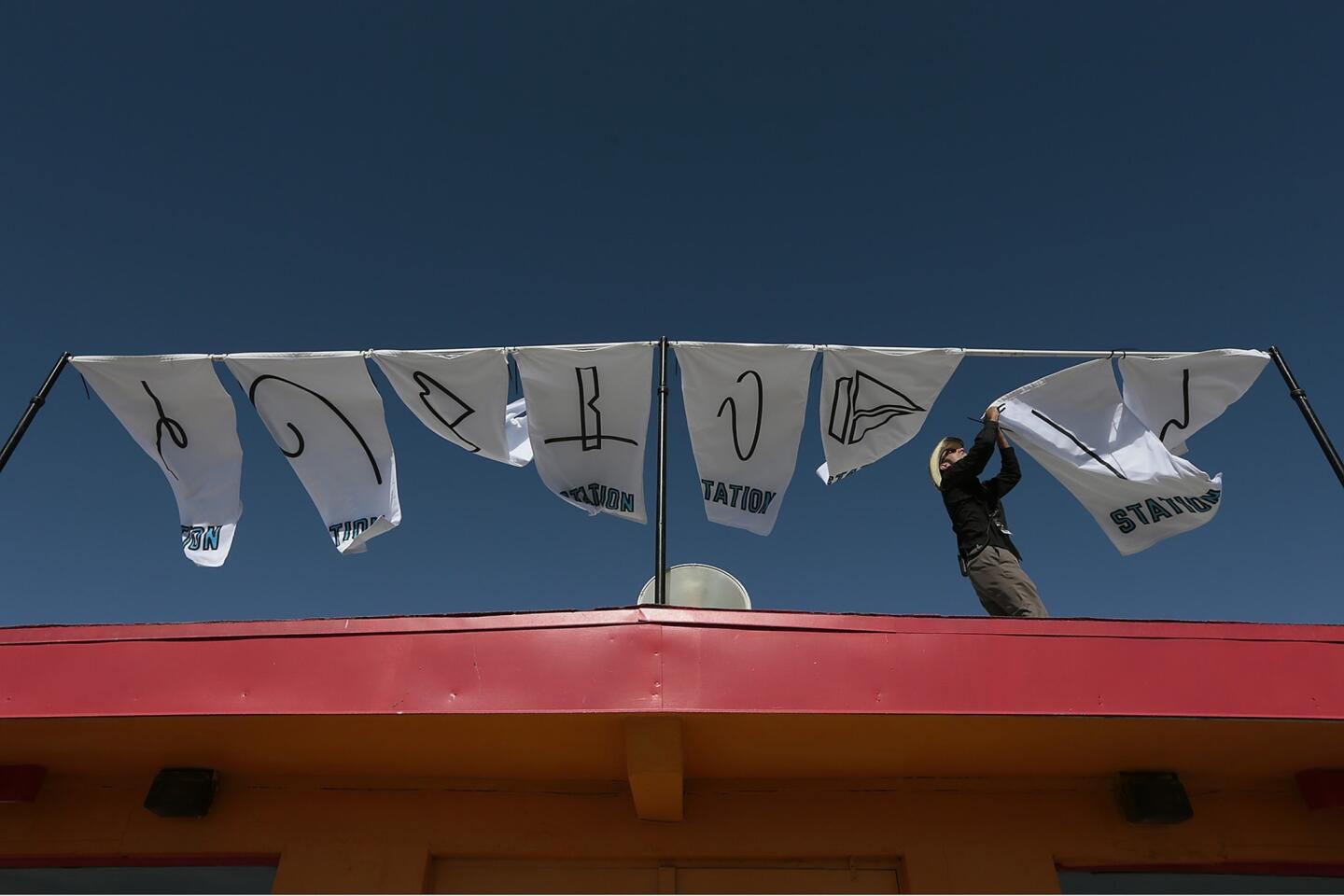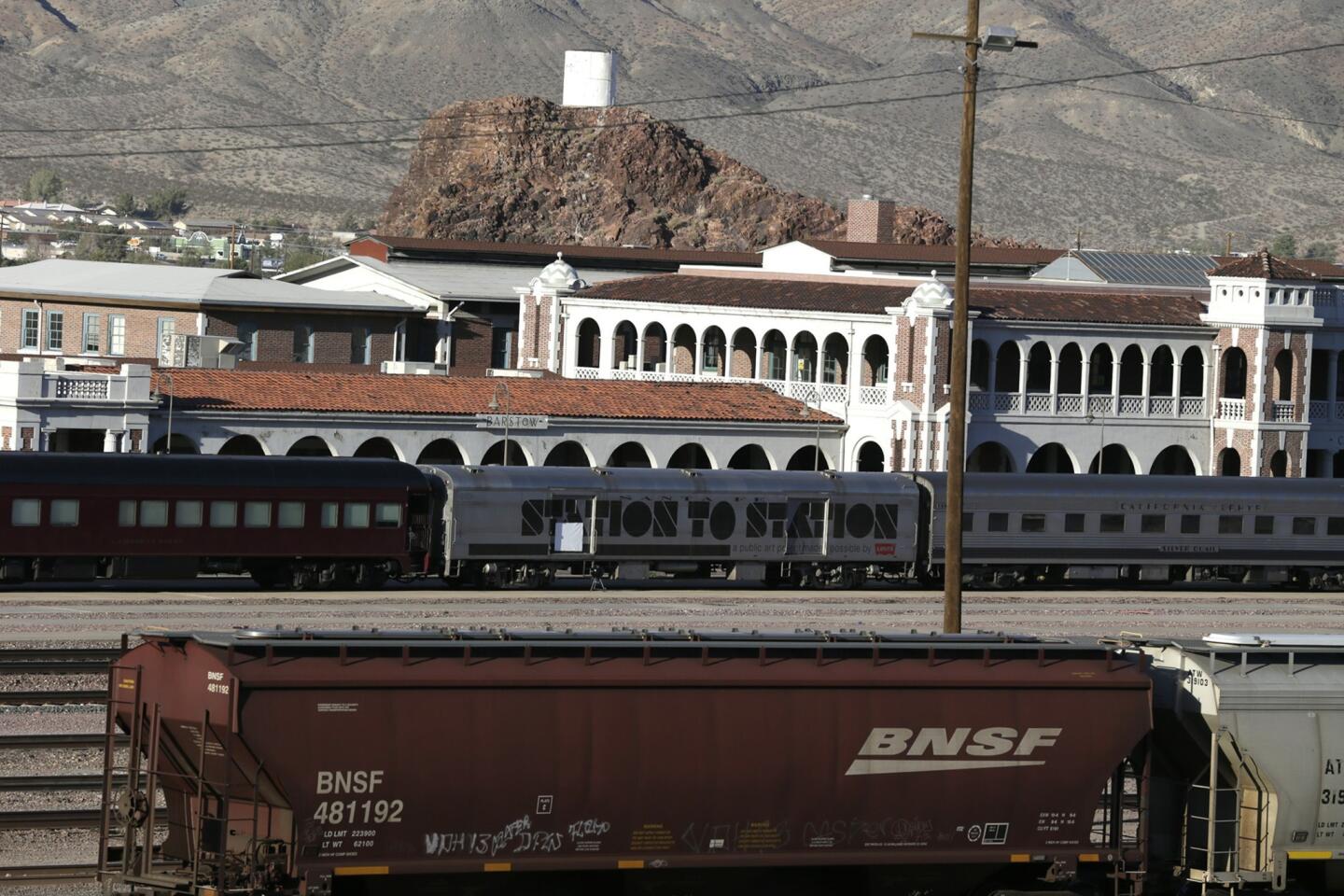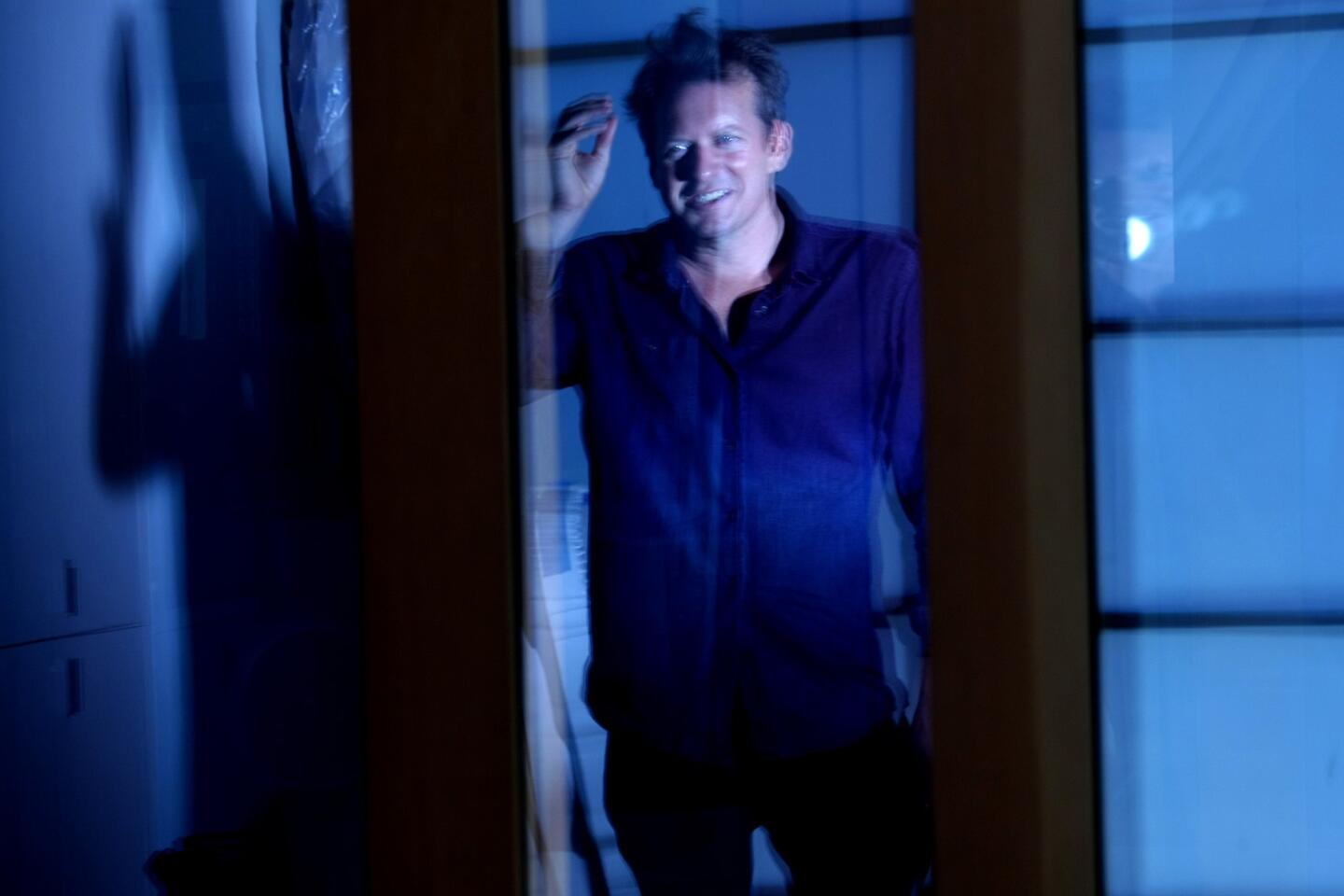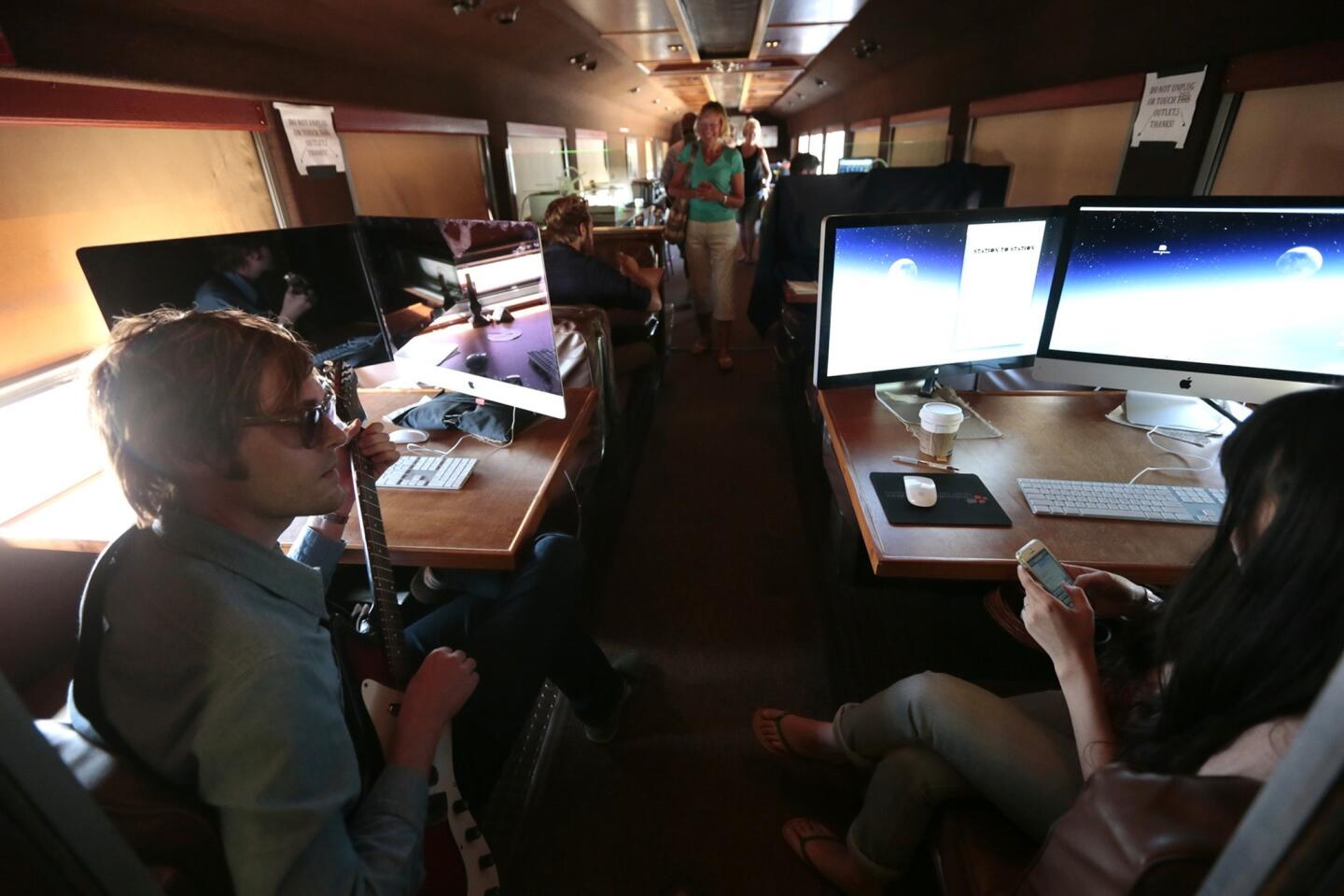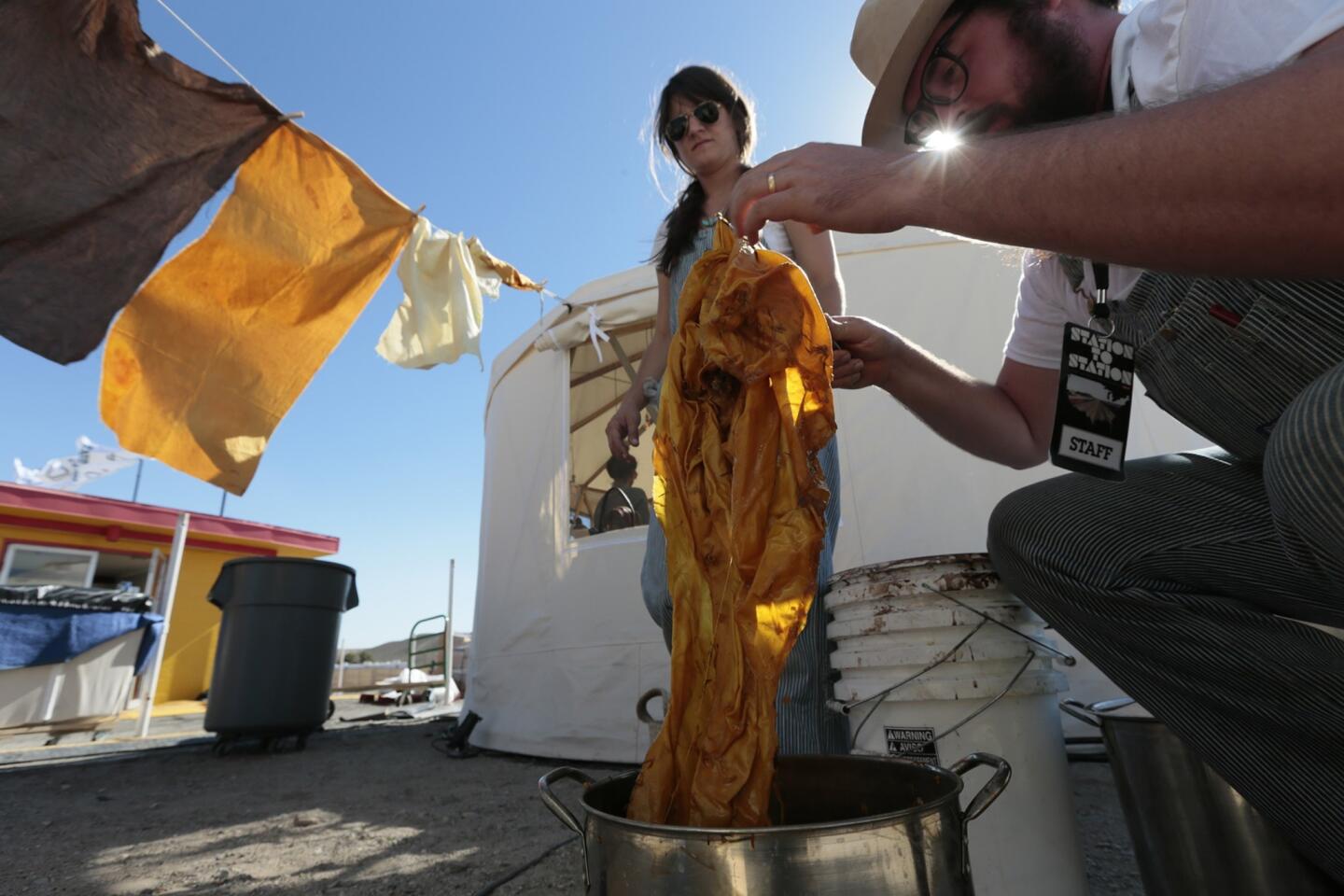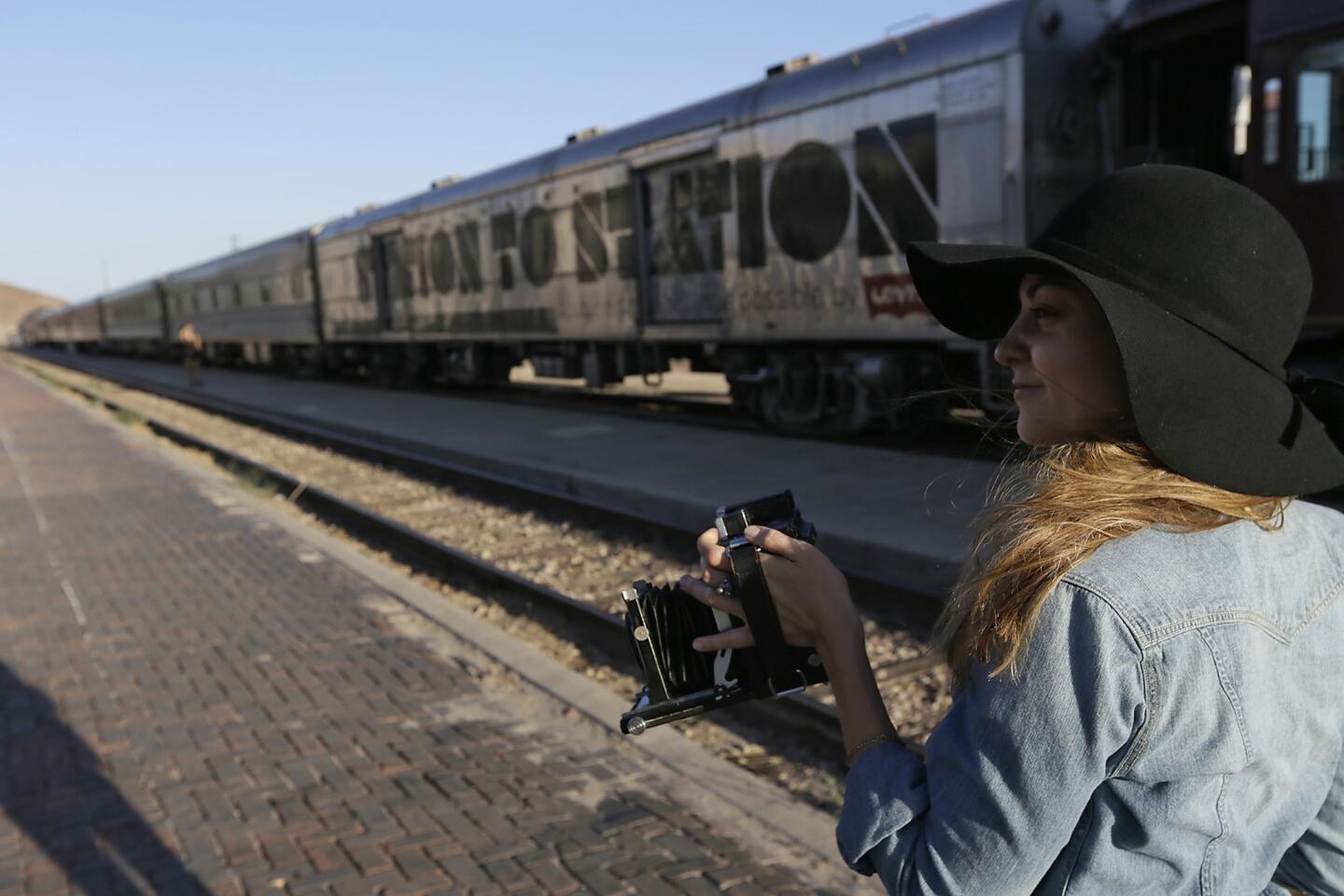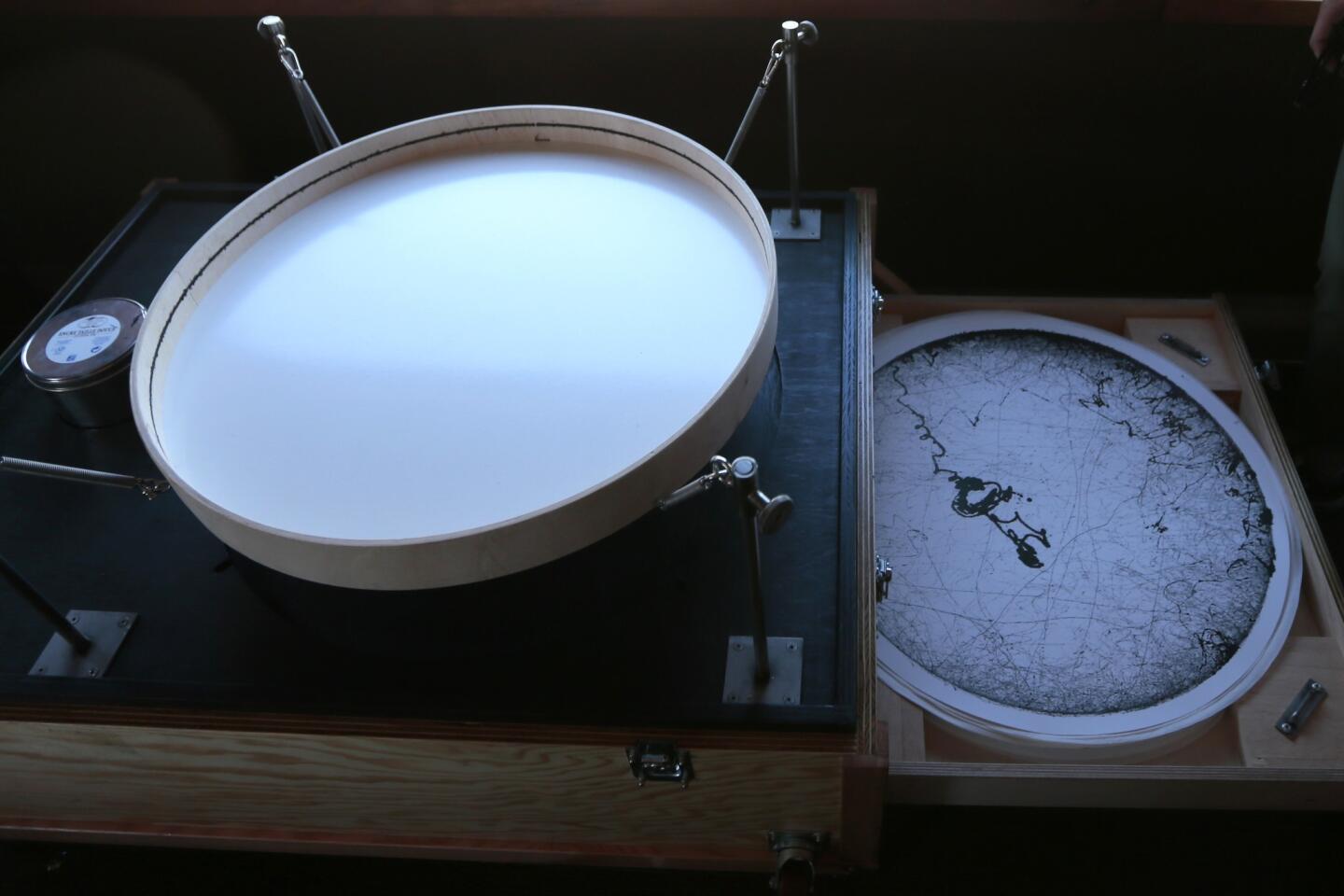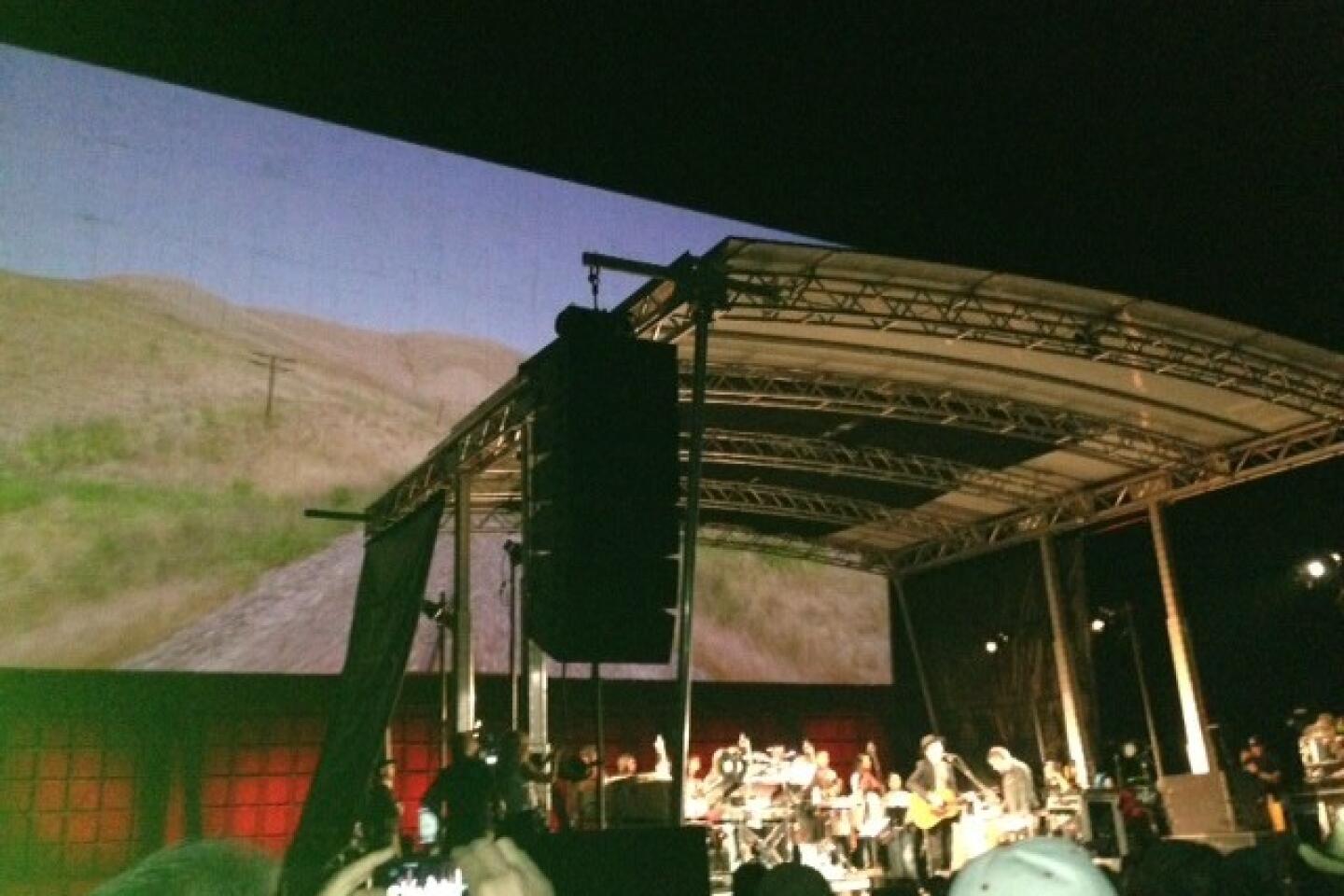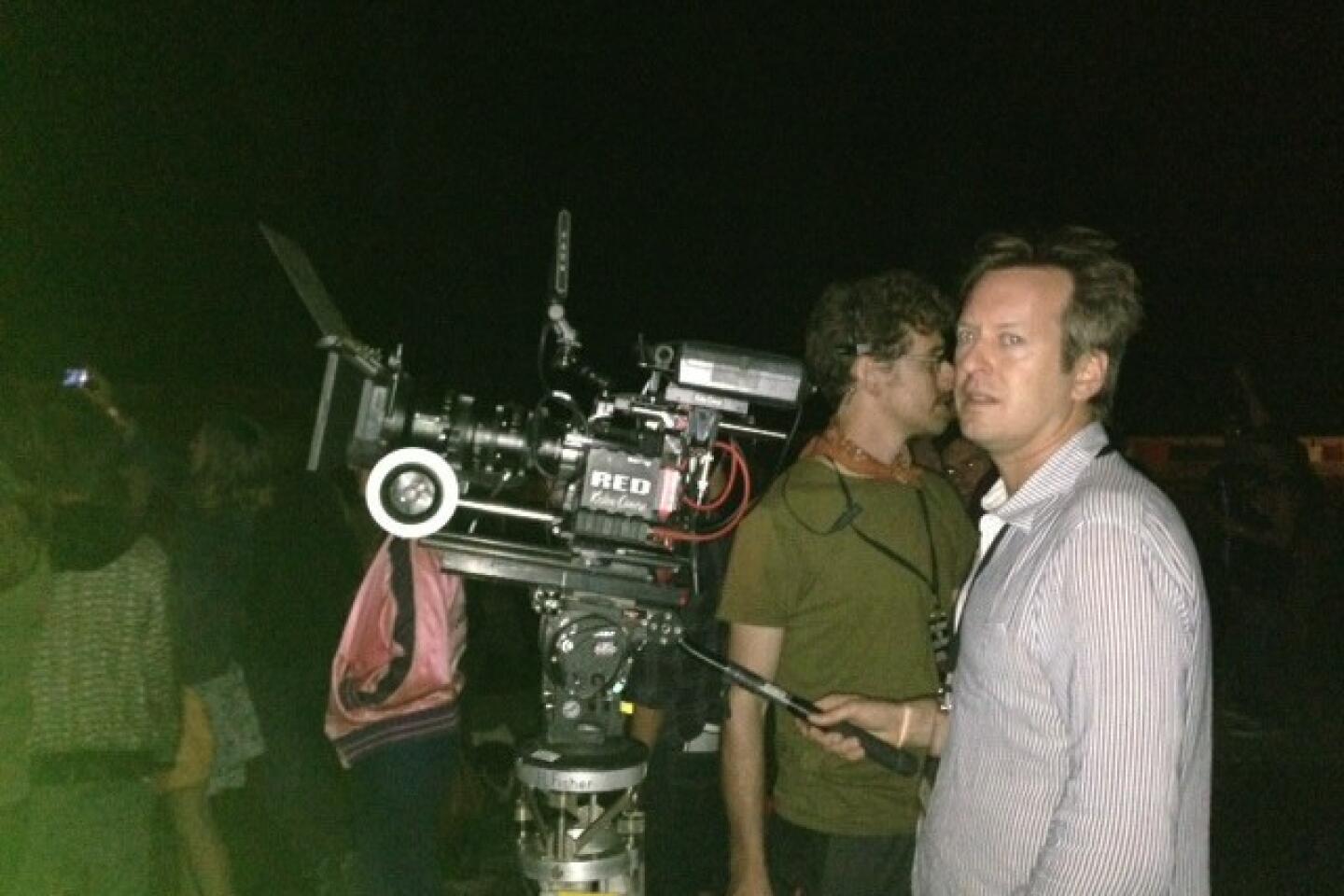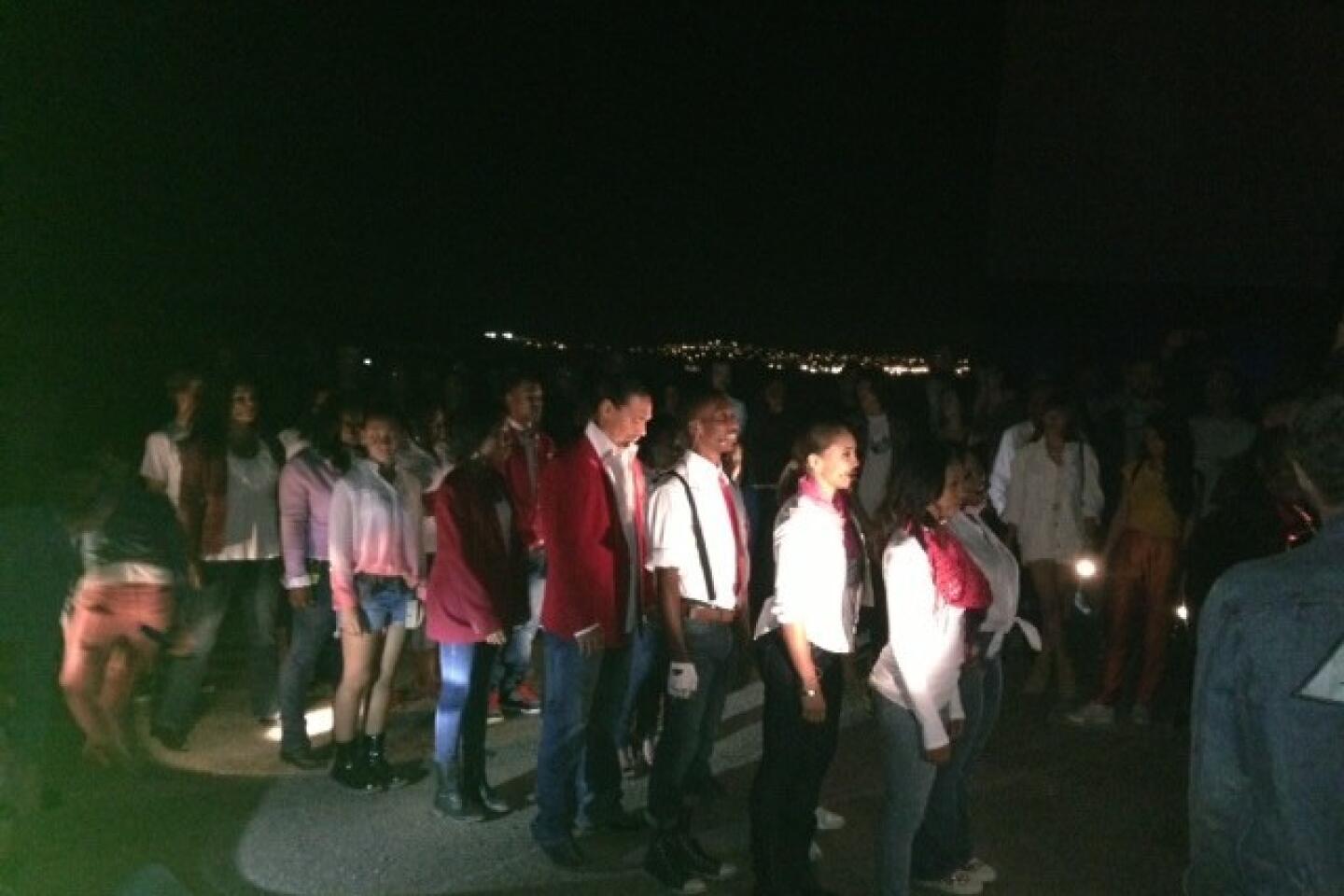All aboard Doug Aitken’s art train
- Share via
BARSTOW — In the dark, Doug Aitken’s art train could be any other industrial locomotive parked at this Amtrak outpost, except for the trail of soft blue-and-white LED lights glimmering along the length of its nine cars. Since it left New York on Sept. 6, Aitken’s “Station to Station: A Nomadic Happening” has attracted tech visionaries (Instagram founder Mike Krieger), musicians (Ariel Pink, Cat Power, Sonic Youth’s Thurston Moore) and, of course, many artists; among them, Peter Coffin, Sam Falls and Liz Glynn. Up to 130 people at a time have come aboard the rolling exhibition. Many more have attended happenings in cities along the route.
But on this Monday, almost all aboard for the train’s three-week journey have dispersed into the desert night, catching up on sleep at nearby motels, blowing off steam in town or working on projects to be unveiled at one of the remaining happenings. Some hone song lyrics; others refine new video or performance installations. The train, nearly empty, rests beside an old Moroccan-style hotel turned into a railway station.
It’s a good time to catch up with Aitken. The traveling art show rolls into Los Angeles on Wednesday afternoon. Before the train heads to its last stop in San Francisco, a Thursday evening happening is planned at Union Station with music by Beck, No Age, Dan Deacon, the Congos and Sun Araw.
CHEATSHEET: Fall arts preview 2013
“This project was born out of necessity,” says the L.A.-based Aitken, best known for his video art. “There needed to be other experiments or templates for culture that are less anchored to place and a sense of containment.”
His vision, he says, was artistic mayhem. And, it’s unfolding exactly as he’s hoped. “I felt like my responsibility was to make this kind of a platform and space for others — to enable things to happen that are maybe a bit more unorthodox.”
One of Aitken’s favorite moments came when Cold Cave, recording a song as the train barreled through the desert at dusk, dropped a microphone between two rattling cars. “That area’s really violent and has this metallic crack and sizzle,” Aitken says. “Wesley [Eisold], the singer, went out there and sang these lyrics he wrote on the train to this throbbing, violent electronic music. That, to me, is what this project is about — it’s a cultural experiment.”
Molly Logan, the event’s executive producer, loved the time Aitken spontaneously decided to send a marching band — the Kansas City Cobras, which had been traveling with the project — through the visual artists’ brightly colored yurt area at the Pittsburgh happening.
“We were observing and responding to the audience, to their energy,” Logan says. “Doug thought it would make a good ending to the evening. But the idea didn’t exist three hours earlier.”
For all its unwieldy nature, the journey has gone eerily smoothly, Logan says. “All of the surprises have been creative ones,” she says.
CRITICS’ PICKS: What to watch, where to go, what to eat
Still, snags happen on road trips, and this one is no exception. There have been weather-related train delays, occasional rowdy partiers on board and a broken water main in Barstow that shut down many local restaurants and left the project’s hotel of choice without water for most of the day.
One unexpected twist: More people than expected have piled on board to sleep on the train at night, when it’s parked. “It was supposed to be about 12, mostly crew, and everyone else would stay at the hotel,” says Adam Auxier, self-described train producer in charge of the crew. “Now, everyone wants to stay on the train; we’re up to about 30 a night.”
Little traditional art is displayed on the train, though a brightly colored print designed by Jorge Pardo adorns pillows in the sleeping cars and place mats in the dining area. For the recording car, Falls designed the curtains, which change from state to state.
There is, however, much art being created, in various messy stages, between stops. In addition to the recording car, which some call the creative heart and soul of the train, there is a content car, outfitted with multiple edit stations, where Aitken’s team posts video from happenings on the project’s website.
Of the five visual artists who are displaying their work in traveling yurts, Glynn is the only one who has been on the train the entire trip. She has a working studio in a sleeping car where she continuously re-tools her yurt, a maze of dark industrial felt that reflects the universe.
INTERACTIVE: High-earning conductors | High-earning arts executives
“Over the course of the travel across the country,” she says, “I’ve done different performances based on different models of the universe and theoretical physics. Seeing it evolve and watching the audience respond is really interesting.”
Aitken, with his crew in a dusty desert clearing prepping for Tuesday night’s show at Barstow’s Skyline Drive-In, says he loves Glynn’s on-board studio. “As you walk through the train, car to car, and pass something like that in progress,” he says, “it’s like you’re simultaneously inside the mind of the artist and in a public space.”
Thursday’s art happening at Union Stationincludes a new work by Beck that he conceived for the project. The show is sold out, but the art yurt area — with installations by Glynn as well as Urs Fischer, Kenneth Anger, Carsten Höller and Ernesto Neto — is free and open to the public. They’re all different. One is multimedia-centric, another features fog and a crystal ball.
Aitken, who’s been filming throughout the “Station to Station” journey, is banking his footage for future projects. He hopes to make a series of short films relaying each artist’s experience and method of working, as well as an integrated installation piece yet to be conceived.
“I want to stimulate a larger dialogue,” he says. “This is like a ‘Fitzcarraldo’ project — being dragged through the east industrial coast, through the Midwest and across the desert. But at the same time, everyone who’s involved, everyone who’s creating it is pushing it, we’re all pushing it together.”
deborah.vankin@latimes.com
More to Read
The biggest entertainment stories
Get our big stories about Hollywood, film, television, music, arts, culture and more right in your inbox as soon as they publish.
You may occasionally receive promotional content from the Los Angeles Times.
